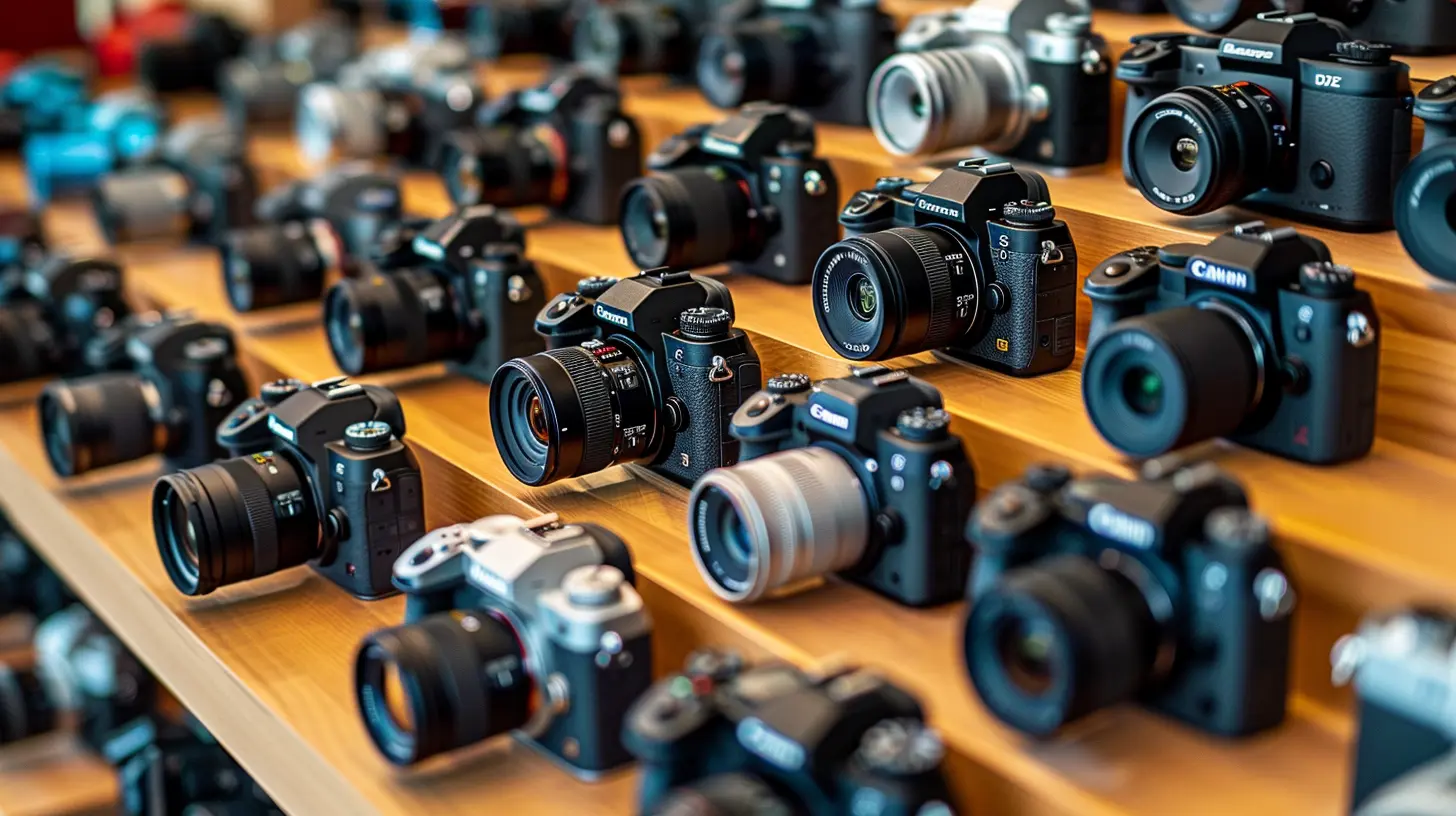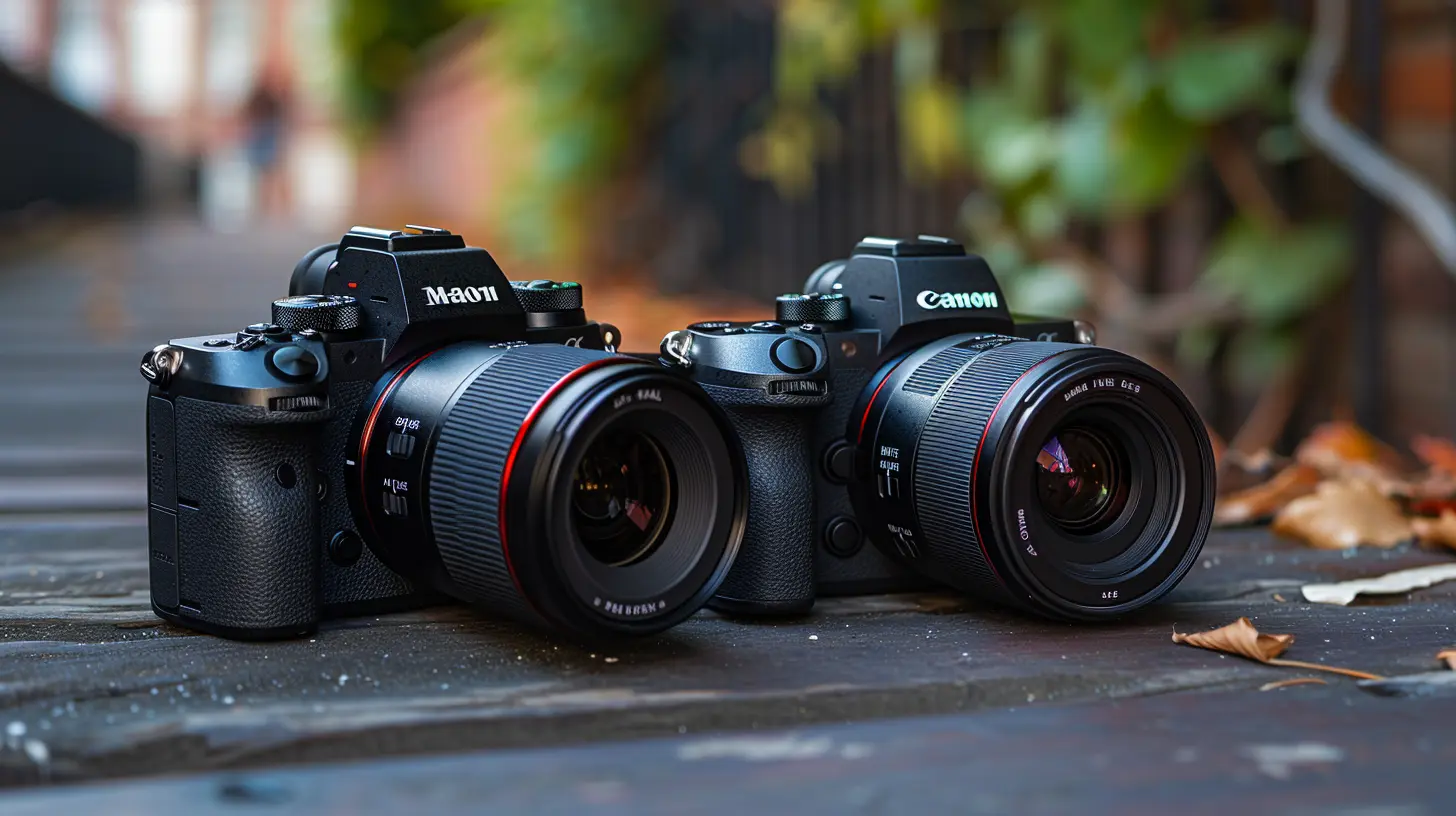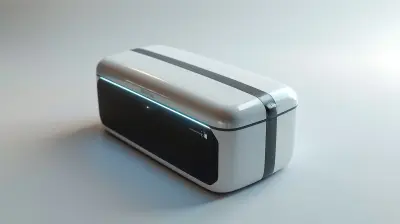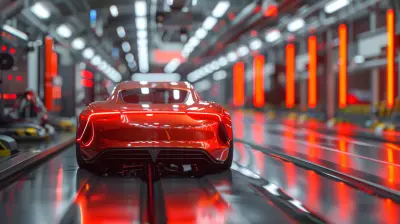Mirrorless or DSLR: What’s the Best Choice for Beginners?
21 August 2025
So, you’ve finally decided to get serious about photography—awesome! You've probably been scrolling through camera reviews, asking friends for advice, and maybe even watching a bunch of YouTube videos. And now you're stuck on the big debate: Mirrorless or DSLR? Don’t worry, you’re not alone. This is hands-down one of the most common questions I get from beginners diving into photography.
Let’s break it down together in simple terms, no confusing jargon, just real talk.
First Things First: What’s the Difference Anyway?
Well, it starts with how these cameras work.- DSLR stands for Digital Single-Lens Reflex. It uses a mirror inside the camera body that flips up when you take a photo. This mirror lets you see exactly what the lens sees through a viewfinder. It's kind of like peeking through a window.
- Mirrorless cameras, as the name clearly hints, have no mirrors. Instead, you see a digital preview of your image, either on the screen or through an electronic viewfinder. It's more like watching a live feed.
That may seem like a tiny difference, but it changes everything—from the size of the camera to the battery life, and even how it feels in your hands.
Portability: Size and Weight Matter
If you're just starting out, you’re probably not looking to lug around a tank of a camera—and we don’t blame you.- Mirrorless cameras are typically smaller and lighter because they ditch the mirror mechanism. They’re super compact, easy to carry in a backpack or even a large purse. If you’re planning to travel, hike, or just shoot friends at the park, this can be a game-changer.
- DSLRs, on the other hand, have more bulk. That mirror and pentaprism inside add size and weight. You’ll feel it in your hands, in your bag, and eventually, maybe even in your back.
🎒 Verdict: For portability, mirrorless wins hands down.
Ease of Use: Which One Feels Friendlier?
If you're learning the ropes, a camera that’s intuitive to use can make your life so much easier.- Mirrorless cameras often come with touchscreen displays, real-time exposure previews, and simplified menus. You change a setting, and boom—you see the result immediately. It’s like having a cheat code for learning photography.
- DSLRs usually rely on physical buttons and dials. That's great once you know what you're doing, but it can get overwhelming at first. Plus, the optical viewfinder won’t show how a setting change affects the exposure.
🧠 Verdict: Mirrorless feels more beginner-friendly, especially if you're a visual learner.
Image Quality: Pixel Wars?
Here’s a secret most people don’t tell you: Both camera types can produce stunning images.Modern DSLR and mirrorless cameras use similar sensors, and for most beginners, the image quality difference is negligible. In other words, don’t sweat it. Whether you're posting on Instagram or printing a canvas for your wall, either will do the job beautifully.
📸 Verdict: It’s a tie. Focus more on skill than tech specs at this stage.
Autofocus: Speed and Accuracy
Let's talk autofocus. Unless you enjoy blurry photos (you don’t), good autofocus is crucial.- Mirrorless cameras, particularly newer models, often have faster and more accurate autofocus systems. They use advanced tech like facial and eye detection, making them ideal for portraits, street photography, or even fast-moving pets.
- DSLRs still do a solid job, especially in bright conditions. But their autofocus can lag a bit when using Live View (that’s when you're composing a shot using the screen instead of the viewfinder).
🎯 Verdict: Mirrorless takes the win here with more advanced and beginner-friendly autofocus systems.
Battery Life: Who Wants to Be Chained to a Charger?
Let’s get real. You don’t want your camera dying on you just when the light is perfect.- DSLRs generally outlast mirrorless cameras when it comes to battery life. They can shoot hundreds more shots per charge because they use less power (thanks to their optical viewfinders and no need for constant screen use).
- Mirrorless cameras burn through battery faster since they rely heavily on electronic displays. That said, newer models are improving in this department, and you can always carry a spare battery.
🔋 Verdict: DSLRs win this one, but it’s not a dealbreaker if you’re okay with backups.
Lens and Accessory Options
Let’s talk glass. The lens you pair with your camera can make a huge difference in your photos.- DSLRs, especially from brands like Canon and Nikon, have been around for decades. That means tons of lenses to choose from—new or used, budget or premium.
- Mirrorless cameras are catching up fast. Their lens ecosystems are expanding, and many brands now offer adapters that let you use DSLR lenses on mirrorless bodies. It’s like getting the best of both worlds.
🔍 Verdict: DSLRs have more options right now, but mirrorless is sprinting ahead.
Price: Budgeting for Your Gear
Ah yes, the money question.- DSLRs can offer incredible value for beginners. Because they’ve been around longer, you can find rock-solid entry-level models at tempting prices. Great for learners who don’t want to break the bank.
- Mirrorless cameras tend to be slightly more expensive—especially the newer ones with the latest tech. But prices are coming down, and the gap is narrowing quickly.
💰 Verdict: DSLRs might save you a little cash up front, but mirrorless is a solid investment.
Future-Proofing: Is One More “Modern” Than the Other?
Here’s the thing—the future is looking bright for mirrorless.Most major camera manufacturers are shifting their focus to mirrorless systems. That means more innovation, more new models, and more advanced features coming down the pipeline.
It’s kind of like switching from DVDs to streaming. Sure, DVDs still work, but streaming is where the world is headed.
🚀 Verdict: Mirrorless cameras are more future-proof.
So… What’s the Best Choice for Beginners?
Alright, let’s wrap this up with some straight talk.If you're looking for something:
- Lightweight
- User-friendly
- Packed with modern features
- Great for learning and growing into
Go with a mirrorless camera.
But if you're on a tighter budget and don’t mind carrying around a bit more gear, a DSLR can still offer exceptional value.
It’s really about your goals and lifestyle. Are you capturing weekend adventures, starting a vlog, or aiming to build a photography business? Knowing what you want will guide your gear choices. And hey, whichever path you choose, remember this: it’s not the camera that makes the photographer—it’s the heart, creativity, and consistency behind it.
So pick your tool, get out there, shoot a ton of photos, and most importantly—have fun with it!
Top Beginner Camera Picks (2024)
Just to give you a head start, here are a few worthy first cameras to check out:Best Mirrorless Cameras for Beginners:
- Sony ZV-E10 – Awesome for video and beginner-friendly.- Canon EOS R50 – A compact powerhouse.
- Fujifilm X-T30 II – Stylish and strong on image quality.
- Nikon Z30 – Easy to use and great for vlogging.
Best DSLR Cameras for Beginners:
- Canon EOS Rebel T8i (850D) – Super intuitive.- Nikon D5600 – Reliable and well-built.
- Pentax K-70 – Weather-sealed on a budget.
Final Thoughts
Choosing between a mirrorless and a DSLR can seem overwhelming at first, but once you figure out your priorities, it becomes much simpler. Mirrorless cameras are sleek, smart, and evolving fast, while DSLRs provide fantastic value and durability.Honestly? You really can't go wrong either way. Just grab the one that feels right in your hands and makes you want to go out and shoot.
After all, the best camera for any beginner is the one that inspires you to keep learning and capturing life as it happens.
all images in this post were generated using AI tools
Category:
Camera GearAuthor:

Kira Sanders
Discussion
rate this article
1 comments
Daisy Cox
Great insights! Mirrorless cameras offer portability and versatility, making them ideal for beginner photographers.
August 21, 2025 at 2:48 AM

Kira Sanders
Thank you! I agree—mirrorless cameras are fantastic for beginners due to their lightweight design and versatile features.


